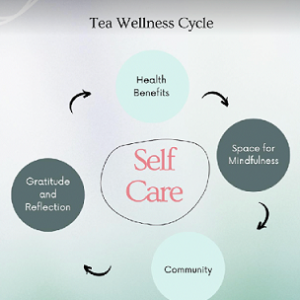Corporate couture womens guide to formal office dressing
Corporate Couture and Its Importance in Formal Office Dressing
The concept of corporate couture, a sophisticated blend of high fashion and professional attire, plays a pivotal role in formal office dressing. This style transcends traditional workplace clothing by integrating bold colors, innovative fabrics, and contemporary silhouettes, ultimately redefining norms of professionalism. In an era where personal identity and self-expression are increasingly valued, corporate couture allows women to convey competence and confidence while maintaining individuality in the workplace. Moreover, the aesthetic appeal of corporate couture can foster a positive work environment, as stylishly dressed individuals often project greater self-assurance and professionalism. The significance of these fashion choices is underscored in visual representations, such as , which showcases modern women confidently navigating both the runway and the office environment. This integration of fashion into formal dressing is a reflection of evolving cultural values, highlighting the importance of aligning personal style with professional expectations.
II. Key Elements of Formal Office Attire for Women
The foundation of formal office attire for women lies in the careful selection of garments that convey professionalism while allowing for individual expression. Essential elements include tailored blazers, structured dresses, and refined blouses, each contributing to a polished appearance that resonates with corporate culture. Fabrics such as wool, silk, and cotton are preferred, as they embody quality and sophistication, thereby enhancing the overall aesthetic. Additionally, the consideration of color palettes plays a pivotal role; neutral tones dominate as they facilitate versatility and ease in coordination. Accessories like understated jewelry and functional yet stylish handbags further enhance the outfit without overpowering it. To visualize this concept, one may refer to , which showcases a diverse array of formal styles that exemplify the intersection of trend and traditional workplace expectations. Ultimately, these key elements underscore the importance of dressing thoughtfully in a professional environment, as they can influence perceptions of competence and authority.
III. Navigating Dress Codes: Understanding Corporate Culture
Understanding dress codes within corporate culture necessitates an exploration of how visual presentation affects workplace dynamics and individual identity. The intersection of fashion and corporate expectations can often reinforce traditional gender norms, creating a duality where attire both constrains and liberates self-expression. As analyzed in the context of womens formal office dressing, the garment selection can serve as a means of contesting and subverting established gender expectations, illustrating how clothing can be utilized to navigate power structures effectively (N/A). This nuanced relationship emphasizes the complexity of corporate couture, where the sartorial choices reflect not only personal style but also adherence to institutional culture. Such dynamics are vividly illustrated in contemporary fashion showcases—like —where the diverse representations of professional attire highlight evolving standards within corporate environments. This visual representation underscores the shifting paradigms of what constitutes appropriate formal office attire in a changing workplace landscape (Dawisha et al.).
IV. Tips for Building a Versatile Formal Wardrobe
A versatile formal wardrobe is essential for women navigating corporate environments, allowing for adaptability across various professional settings. Key foundational pieces include tailored blazers, classic trousers, and a selection of blouses that can be mixed and matched. Investing in high-quality fabrics is also crucial, as materials with longevity contribute to sustainability while ensuring that garments retain their structure and appearance over time, a concept echoed in current research advocating for garment longevity and sustainability practices within the fashion industry (Cramer et al.). Accessories such as elegant scarves or statement jewelry can further enhance versatility, allowing outfits to transition seamlessly from day to evening engagements. Visual representations of these concepts can be found in contemporary fashion imagery, such as the dynamic scene depicted in , where models showcase a variety of formal styles that embody modern professional aesthetics. Building a wardrobe with these considerations in mind fosters a polished, professional appearance while promoting ethical fashion consumption practices.
V. Conclusion
In conclusion, the integration of corporate couture into formal office dressing not only reflects societal standards of professionalism but also allows for individual expression within the workplace. By embracing stylish yet appropriate attire, women can navigate the complexities of corporate environments while making impactful statements about their personalities and roles. As illustrated by , the diverse range of fashionable outfits worn by models signifies a shift toward more vibrant and dynamic expressions of business attire, challenging traditional monochromatic norms. This evolution emphasizes the importance of self-identity and empowerment through dress, promoting an atmosphere where creativity and professionalism coexist. Ultimately, understanding the nuances of corporate couture equips women with the tools to assert their presence confidently in formal settings, contributing positively to their professional advancement and the broader discourse on dress codes in the workplace.
Image1 : Models showcasing contemporary fashion trends in a runway setting.
How satisfied are you with this essay?

References:
- Igglesden, Katrina. “Traditionally Contemporary? Understanding Urban Fijian Masi”. 2019, https://core.ac.uk/download/337659503.pdf
- Hotze, Mary Louise. “An Examination of Individual Differences in Italian and American Fashion Cultures: Past, Present, and Projections for the Future”. 2018, https://core.ac.uk/download/211350713.pdf
- Dawisha, Nadia. “The Fashion Industry as a Slippery Discursive Site: Tracing the Lines of Flight Between Problem and Intervention”. University of North Carolina at Chapel Hill Graduate School, 2016, https://core.ac.uk/download/210601363.pdf
- Link, Stephanie A.. “Mobile truck entrepreneurship: motivations and strategies of non-food mobile retail truck entrepreneurs in the United States”. ‘University of Missouri Libraries’, 2025, https://core.ac.uk/download/568399579.pdf
- Cramer, J. “The living wardrobe: fashion design for an extended garment lifetime”. RMIT University, 2025, https://core.ac.uk/download/pdf/224795341.pdf





